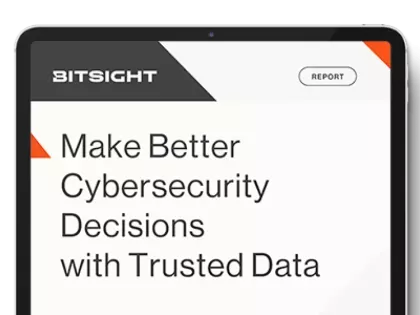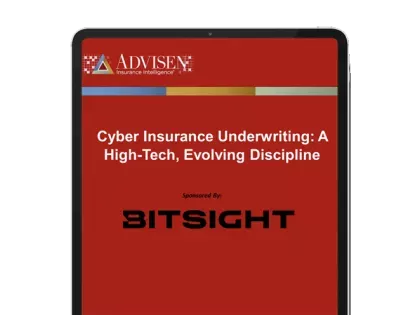Bitsight for Cyber Insurance gives cyber insurers what they’ve been craving. Transparency into an applicant’s cyber risk. A way to underwrite and price policies better. And to find risk accumulations.
Bitsight for Cyber Insurance gives cyber insurers what they’ve been craving. Transparency into an applicant’s cyber risk. A way to underwrite and price policies better. And to find risk accumulations.
Confidently underwrite policies. Find and mitigate exposure. And analyze trends across your portfolio.
Underwriting
Underwriting
The right underwriting decisions
The right cyber coverage starts with the right data. Base your guidelines on past cyber risk—the industry’s most impactful data—and historical performance from each applicant.
- Make the right decisions from the start of an applicant’s policy
- Use historical data to make today’s choices
- No more subjective underwriting decisions
Risk Control
Risk Control
Control risk across your portfolio
Find and mitigate any exposure to changing risks and vulnerabilities—across all your policyholders. Proactively reduce claims. Improve loss ratios. And collaborate with all your insureds within the Bitsight application—at scale.
- Slash exposure—and claims associated with them
- Get insightful views across your portfolio
- Collaborate with insureds to strengthen their cyber posture
Portfolio Management
Portfolio Management
Manage your entire portfolio with ease
Don’t just manage exposure. Predict it—no matter how large your portfolio. See risk trends, risk accumulations, and risk of catastrophe so you can mitigate losses—for third and fourth party risk.
- Understand your risk diversification with risk trends
- Determine where risk is piling up—so you can adjust on the fly
- Aggregate data to aid in modeling scenarios
The most statistically significant and correlated with the likelihood of cyber incidents, giving you spot-on measurements of performance.
Download the The Marsh McLennan Cyber Risk Analytics Center Study
Over 7,000 CVEs tracked within Bitsight.
Tracking over 8,000 unique service providers. 26,000 unique tech products. And nearly 1000 security providers that your policyholders might be using.
We continue to hear from clients that cybersecurity is among their most urgent risk concerns. By collaborating with Bitsight, we are providing clients with more data-driven insights to better manage risk in an increasingly difficult cybersecurity landscape.
Resources
Get to know Bitsight for Cyber Insurance
The Marsh McLennan Cyber Risk Analytics Center Study

The Marsh McLennan Cyber Risk Analytics Center Study
On-Demand: Cyber Insurance Underwriting: A High-Tech Discipline?

On-Demand: Cyber Insurance Underwriting: A High-Tech Discipline?
Bitsight for Insurance



